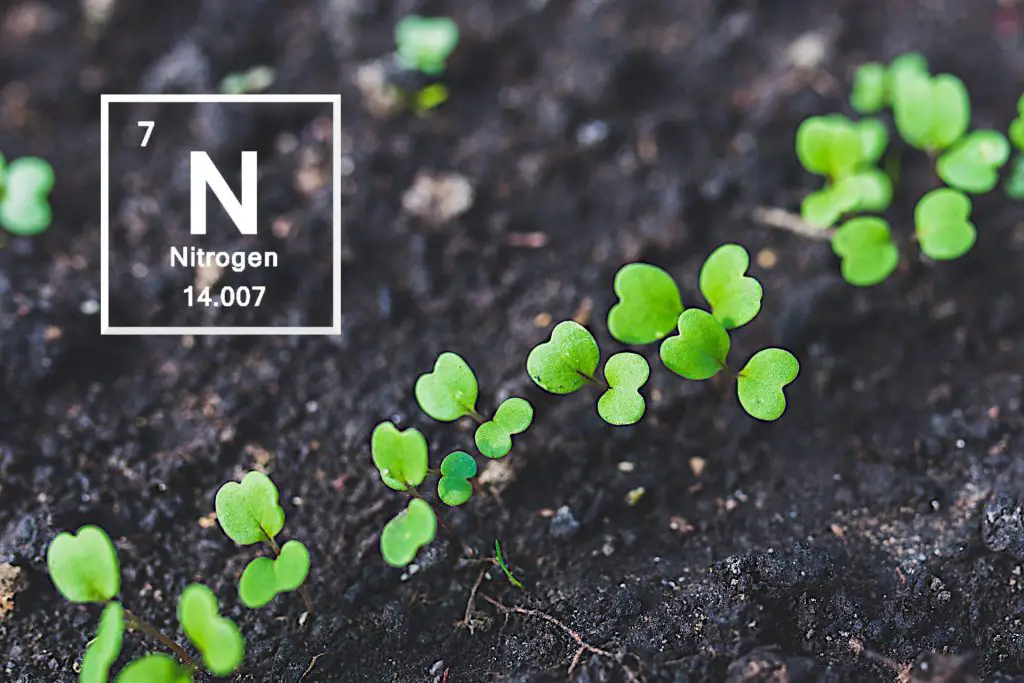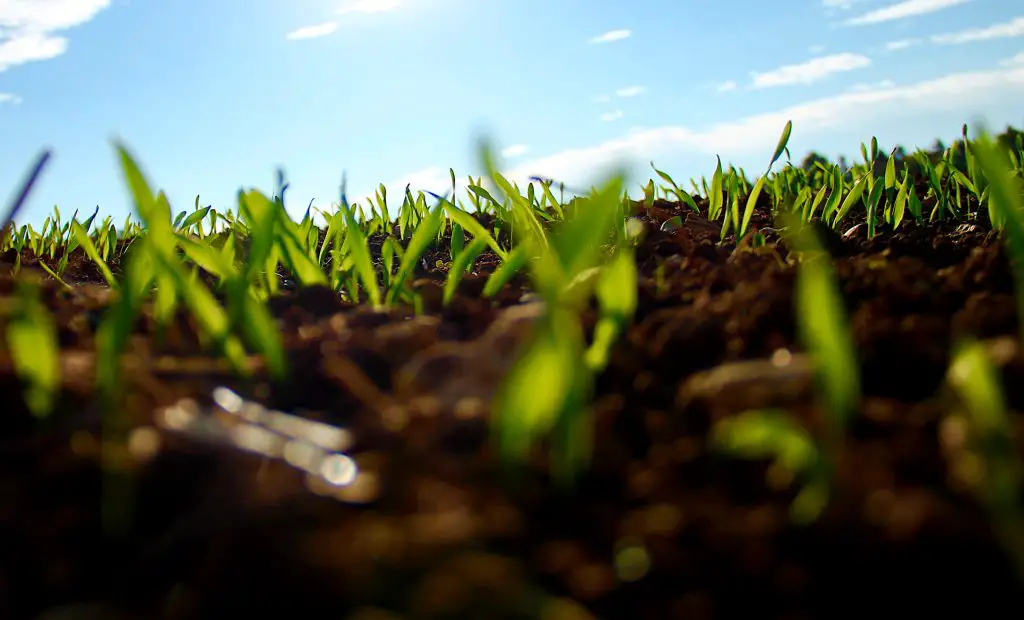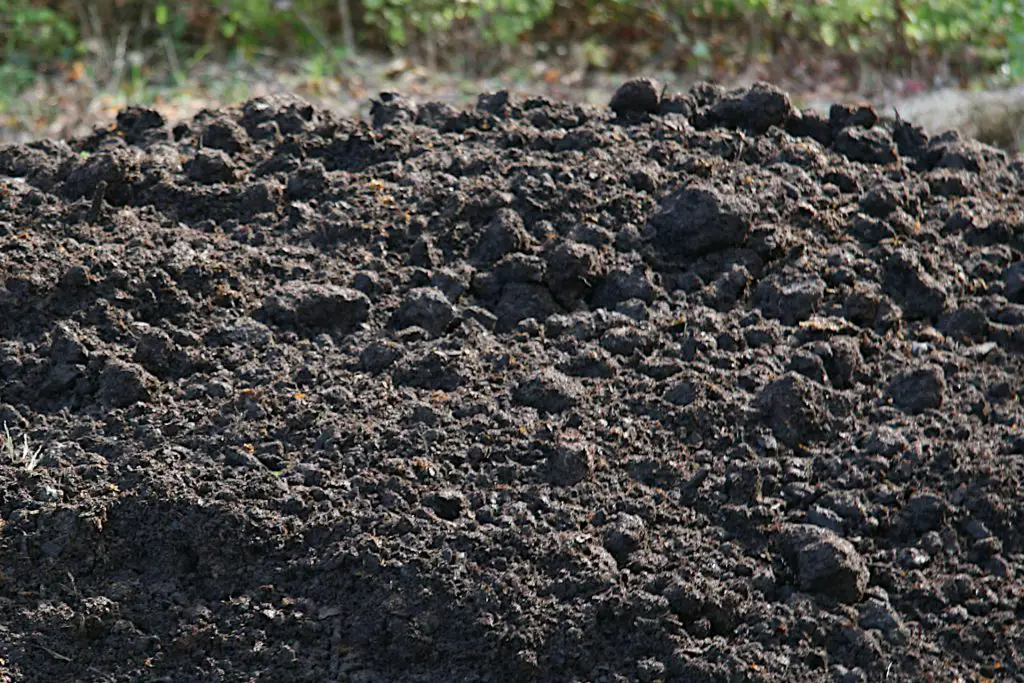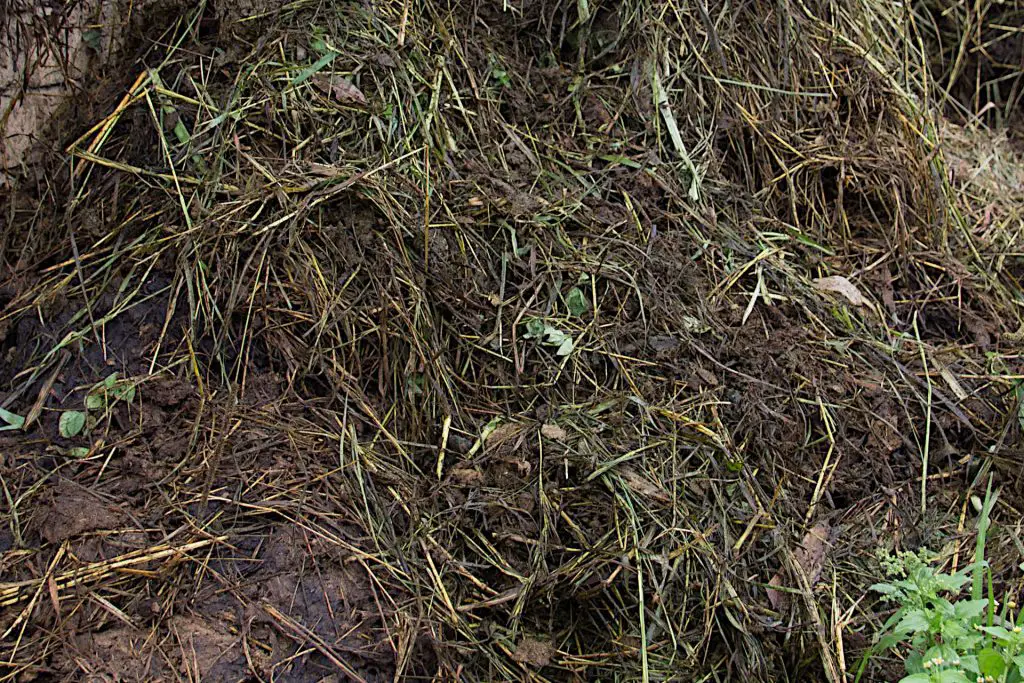Fix Nitrogen Deficiency in Your Soil for Improved Plant Health – Adding Nitrogen to Soil
The predominant way in which a plant derives the nitrogen it needs is from its growing medium. In most cases this would be soil but even were you using alternative growing mediums nitrogen would be required in order for the plant to grow. When there is a lack of nitrogen for plants to draw on, growth becomes stunted. In this article, we will look at various different ways you can fix nitrogen deficiency in your soil using the wast effective nitrogen sources.
Nitrogen occurs naturally in the soil and is replenished via the nitrogen cycle. However, nitrogen can, for various reasons that we will look at, become depleted with the natural nitrogen cycle unable to sufficiently replenish the lost nitrogen. This creates a nitrogen deficiency in your soil.
Adding nitrogen to your soil rectifies this deficit and is something you will regularly need to do if you want optimal plant growth. There are, though, several factors that influence if, what, when, and what volume of nitrogen you might need with each being dependent on the individual condition of your soil.
Why is Nitrogen So Important for Plants?

Plants need nitrogen to produce chlorophyll, a molecule that helps them absorb light and use it to produce sugars and starches through a process called photosynthesis. The sugars produced by these processes are what plants feed on to grow. Plants also need nitrogen for the creation of amino acids, proteins, and nucleic acids, which are building blocks for DNA and RNA.
Nitrogen is found in the soil in organic forms called nitrates and is the predominant source of nitrogen for plants. The roots of plants absorb nitrogen, and it travels up the stem to the leaves where it is used to produce chlorophyll. Without adequate amounts of nitrogen, plants cannot produce fruits, flowers, leaves, stems, roots, seeds, pollen, or even bark.
The Nitrogen Cycle
The process by which nitrogen is converted from its many different chemical forms into a form that can be used by plants is referred to as the nitrogen cycle. The recycling of nitrogen, a vital component for all forms of life on Earth, is made possible through this process.
In the most basic terms, it is a cycle in which dead crops disintegrate and provide nitrogen to the soil as they go through the process of dying. This is then drawn upon by fresh crops to allow them to develop and flourish until, ultimately, they also perish and decay, therefore forming a cyclical pattern.
However, in scientific terms, it is a complicated process, and the cycle itself involves a number of distinct systems in some capacity. The processes of nitrogen fixation, nitrification, mineralization, immobilization, leaching, and denitrification are all included in this category.
The process by which nitrogen is transformed into a form that may be used by plants is referred to as nitrogen fixation. Bacteria referred to as “nitrogen-fixing bacteria” are responsible for carrying out this procedure. Plants are able to make use of the ammonia or nitrate ions that are produced as a byproduct of these bacteria’s conversion of atmospheric nitrogen.
Mineralization is the process by which bacteria consume organic material and convert it into ammonium. Organic matter is taken up by microbes. Mineralization rates may be rather variable as a result of the fact that this process is sensitive to changes in temperature, oxygen content, and moisture content.
Nitrification is the process by which microorganisms in the soil transform ammonia into nitrates. This transformation takes place in the soil. The production of proteins requires nitrates, hence the mechanism being described here is very significant for the development of plants.
The process of immobilization is the antithesis of the mineralization process. It’s the method through which microorganisms in the soil compete with plants for limited amounts of nitrogen. As the organisms in the soil soak up ammonium and nitrates, these nutrients become unavailable to the plants.

The Trouble Caused by Nitrogen Being Leaked from the Ground
Both denitrification, the process in which nitrogen is lost via gas that evaporates, and leeching, the process in which nitrogen dissolves into the water and runs off, have the potential to cause nitrogen to escape from the soil over the course of the process.
Both of these conditions are often brought on by improper soil structure, which then leads to a reduction in the amount of nitrogen that is accessible to plants.
How to Tell if Your Soil Needs Nitrogen
There are a number of ways to tell if your soil needs nitrogen. One way is to observe your plants. If the leaves are stunted, yellow, or purple, it could be a sign of a nitrogen deficiency. Browning of the leaves, especially in the bottom of the plant, is another sign of a deficiency. The plants may also have a weaker and spindly root system.
Another way to tell if your soil needs additional nitrogen is to dig up a few spades of soil. If it is black or red in color, it is a sign that the soil is lacking in nitrogen. The best way though, to determine whether your soil lacks nitrogen is to test it.
Soil Testing for Nitrogen Deficiencies
If you keen gardener or just want your lawn and plants to look the best they can, then monitoring the nitrogen, and other nutrient levels of your soil, should be a regular task. Testing is relatively simple and can be done with soil test kits or by using a digital soil tester. Using the soil test readings you get as a guide, if the amount of nitrogen in the soil is low, you should supplement your soil with it and any other depleted nutrients, before looking to plant new crops.
Keep in mind that if the soil is already high in nitrogen, adding more will not improve plant growth. indeed high concentrations of nitrogen can be toxic for plants and as such soil testing is an important step in avoiding excessive nitrogen levels, as it is in detecting depleted nitrogen.
Regular testing allows you to determine and manage the amount of nitrogen already in the soil and helps you calculate the right amount to add. It should be part of your regular seasonal planting cycles.
The Best Ways to Add Nitrogen to Soil
There are various ways in which you can add nitrogen to your soil. The source of nitrogen you choose will likely depend on the deficiency level, your gardening outlook in terms of preference for organic or inorganic sources, and sometimes what is to hand. Below we list some of the most effective options that are available,
Using a Commercial Plant Fertilizer to Increase Nitrogen
There are a number of different commercial fertilizers that add nitrogen to the soil. A balanced fertilizer will provide a ratio of approximately 5:1:1 (nitrogen, phosphorous, and potassium). A fertilizer that is high in nitrogen and low in phosphorous is used for rooting and growing new shoots. Fertilizers that are higher in phosphorous and lower in nitrogen are used for flowering and fruiting plants. You can also use a fertilizer that has higher nitrogen and phosphorous ratio for a quick boost to your plants. This is ideal for growing plants in the fall for winter harvest.
Nitrogen Levels in Fertilizer

On most commercial fertilizer bags you will see three numbers, such as 10-10-10, printed. These numbers represent the amount of primary nutrients nitrogen, phosphorous, and potassium (NPK) that the fertilizer contains. The first number is the level of nitrogen in fertilizer is expressed as a percentage. The higher the percentage, the more nitrogen is in the fertilizer. The level of phosphorous and potassium are also expressed as percentages. So if the numbers read 10-10-10 then in a ten-pound bag 1lb is nitrogen, if it reads 24-4-12 then 2.4lbs of a ten-pound bag is nitrogen.
There are many different ratios of nutrients in commercial fertilizer, each with different use cases. Be careful with nitrogen-rich fertilizers that you carefully calculate the amount of nitrogen contained in a bag. It is always advisable that you read the package in order to get the most appropriate fertilizer for the job.
Adding Urea to the Soil to Boost Nitrogen Levels
Urea is a natural fertilizer that is often used to add nitrogen to the soil. It is a synthetic fertilizer that is derived from natural sources, such as plants and animals. It is not ideal for use in vegetable gardens because it does not break down and will remain in the soil for many years. This can lead to a build-up of nitrogen in the soil, which can be harmful to plants. Urea can be used for flowers and lawns, but it should be applied with care. Be sure to read the directions on the package to determine the amount needed.
Using Compost to Increase Nitrogen Levels

One of the most common ways to add nitrogen and other primary nutrients to the soil is by using compost either commercially bought or homemade. Compost for the garden may be prepared from a broad variety of organic materials, such as animal manure, vegetable scraps, and food scraps from the kitchen. Compost may be generated at home using either the classic methods, the hot composting method, or the cold composting method. Compost tea and compost stew are two examples of liquid compost that may be made from organic materials by brewing them into a tea or simmering them in a stew.
In terms of nitrogen content, it is much less than using manure, around 1%. However, it is organic and is a great way of correcting smaller nitrogen deficiencies, as well as adding the other primary nutrients and helping with soil structure. Indeed for most gardens, it may well be a good choice but testing the soil is the best way to find out
Adding Nitrogen with Composted Manure
If you have access to composted manure, you can add it to the soil to increase the amount of nitrogen. Make sure that the manure has been cured (aged) and is not fresh manure. Fresh manure is high in nitrogen and can cause toxic levels in the soil and can also contain dangerous pathogens. Aged manure is lower in nitrogen, but will add a small amount to your soil.
Manure is an excellent organic fertilizer, but it is less of an exact science than adding commercial fertilizer. Depending on the type, cured manure can contain between 2 and 4% nitrogen. Because nitrogen levels can vary it should be applied carefully. Adding too much can cause a buildup of nitrogen in the soil, which can be harmful to plants and soil organisms.

Using Green Manure to Add Nitrogen to the Soil
When it comes to organic gardening and farming, green manure is an essential component. It is a method that has been around for generations and has been used to enhance the fertility and health of the soil. Green manure crops are often plants that can be cultivated quickly and then placed back into the soil once they have been harvested. This may be accomplished in a number of ways, the simplest of which is to let the crop remain in the ground for a long length of time. Another option is to cut the crop and then plow it back into the soil, replicating the nitrogen cycle.
Although it does not have the same elevated nutrient and level of manure and the process is not really practical to use for small areas, some people believe that it is a more environmentally friendly alternative to using animal manure. This is despite the fact that it does not have the same elevated nutrient and level of manure.
How to Add Nitrogen to Your Soil
Once you have determined, by testing your soil, the level of nitrogen deficiency and have chosen your source of nitrogen then the next stage is to apply it to the soil. This should to be done in it is most effective way possible without leaving the soil with levels of nitrogen that are elevated.
How to Apply Fertilizer to Your Garden Soil
Nitrogen can be added in many different ways. The easiest way is to use commercial fertilizer. This product is readily available at gardening stores and comes in different formulations based on the needs of different plants. When you purchase a fertilizer, make sure to read the directions on the package to determine the amount needed. If you are adding fertilizer to the soil, till it in at least two weeks before planting. This gives the fertilizer time to break down and make its way into the soil. If you add fertilizer while planting, it will not have time to work its way into the soil.
If you are adding nitrogen to your soil for the first time, start with 1/2 pound of fertilizer per 100 square feet. After that, the amount will decrease slightly each year that you add the fertilizer. If you had a soil test and know there is a deficiency in nitrogen, use the same method to determine the amount of fertilizer to add. Adding nitrogen to the soil this way is a natural and sustainable way to improve plant health and increase yields.
How to Apply Manure and Compost to Your Soil
When applying manure as previously mentioned it is important that it has been aged. To avoid creating excess levels of nitrogen, apply manure at the rate of no more than one-third of the total amount of nitrogen in the soil. When using manure, it is therefore important to test the soil for nitrogen before adding the manure.
When using compost there is various soil to compost ratios that are recommended, each dependent on the use case. In general, you should find 2:1 or 3:1 ratios of soil to compost cover most scenarios. If you need higher nitrogen levels then manure or fertilizer may be better options.
Which Sources of Nitrogen to Avoid
You will find all sorts of weird and wonderful suggestions as to what to add to your soil to increase nitrogen. Some of these, although adding some nitrogen, won’t be particularly effective whilst others are downright dangerous. The list below are some methods to avoid or supplement.
Fish Emulsion
One organic soil amendment that is often suggested is fish emulsion. With fish emulsion, it is true that it does contain levels of nitrogen and will actually help. The problem is that the levels are fairly low and it is likely that you will have to further supplement with compost or manure to really improve the nitrogen levels in your garden soil. Fish emulsion can also improve soil quality as it is an ideal amendment for providing nutrients to seedlings and transplants.
Used Coffee Grinds
Coffee grounds do contain nitrogen and are actually a good green material to add to compost, however, if put directly into garden soil they will have minimal effect and can contain harmful enzymes. These enzymes would be destroyed during the composting process when breaking down in a compost pile. Coffee grounds are thus unlikely to be beneficial to boosting nitrogen levels in your garden soil and also pose a risk of being hazardous.
Adding Eggshells to Your Soil
Egg shells do include tiny levels of nitrogen, but these amounts are so minute that they are essentially insignificant and won’t make much of a difference even if your garden soil is suffering from a severe lack of nitrogen. They do however contain other minerals and like coffee ground, can be composted.
Urine
Urine is often touted as a rich source of nitrogen. It is true that it contains urea but these levels are low and it is far better to purchase urea fertilizer to do the job. In addition, urine can contain diseases and if it has been concentrated might be fatal to your plants.
Excrement from Dogs or Humans
While some animal waste in the form of manure can be highly beneficial in increasing nitrogen and nutrient levels in soil, not all animal waste is suitable and even manure from horses, cows or sheep needs to be aged first. If trying to use human or canine feces there is a high probability that you may transmit sickness and pollute your food supply.
Summary: Adding Nitrogen to Your Soil
Nitrogen is an essential nutrient for plant growth, without adequate levels plants are unable to grow and thrive to their full potential. The usual source from which plants draw nitrogen is the soil. The problem is that many soils are deficient in nitrogen, which can lead to stunted plant development, decreased yields, and poor soil health. By adding nitrogen to your soil you can improve plant growth and optimize soil health. However, too much nitrogen can be just as problematic as nitrogen deficiency, resulting in toxic levels in the soil, damaging and even killing your plants
Soil is the foundation of all gardening. Healthy soil has the ability to hold water, nutrients, and air. Improving your soil’s health can help increase plant growth and productivity, as well as improve overall soil quality. When you add nitrogen to your soil you can drastically improve the health of your soil and ensure that the nitrogen cycle that is so important for plant life, is protected. Nitrogen is a key nutrient for plants and can help them grow strong roots and shoot new leaves.
As we have discussed there are numerous different ways in which you can add nitrogen to the soil, either organic or inorganic, commercial or home produced. The key with whichever way you choose is to make sure that you test the soil before you apply, and make sure that you don’t apply too much nitrogen-rich material as excess nitrogen can be as damaging as nitrogen-deficient soil
Notes:
[1] North Carolina Department of Agriculture & Consumer Services: A Homeowner’s Guide to Fertilizer
